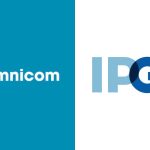By The Malketeer
A Mega-Merger That May Burn Down the Digital Ad Ecosystem!
In an era where technology giants increasingly dominate the advertising landscape, the recently announced merger between Omnicom and Interpublic represents far more than just another corporate consolidation.
This is a strategic recalibration that signals a profound shift in how marketing services will be delivered in the coming years.
100,000 Employees, US$20 Billion, and One Ruthless Plan to Crush Big Tech!
The numbers are staggering.
A combined entity with 100,000 employees and potential net revenue exceeding US$20 billion will create the world’s largest advertising holding group.
But beyond the impressive statistics lies a deeper narrative about survival and reinvention in a digital-first world.
Advertising’s Walking Dead: The Brutal Revolt That Will Shock the Industry!
Consider the context: GroupM forecasts that just three tech platforms—Google, Meta, and Amazon—will capture 41% of global ad revenue by 2025.
Traditional agencies have been increasingly marginalised, reduced to what industry veteran Bob Hoffman bluntly calls “the sales department for the adtech rat pack.”
This merger is a direct response to that existential challenge.
US$750 Million Bloodbath: How They’ll Absolutely Demolish the Competition!
By combining their technological capabilities, data platforms, and creative talent, Omnicom and Interpublic are positioning themselves as a formidable alternative to the tech giants.
The merger isn’t just about cost synergies—though the projected US$750 million in annual savings is noteworthy—it’s about building a more agile, technologically sophisticated marketing services powerhouse.
Leaked: The Secret Weapon That Will Make Big Tech Executives Cry!
The strategic vision articulated by leadership is telling.
John Wren, continuing as CEO, speaks of “accelerating innovation” and “harnessing opportunities created by new technologies.”
Philippe Krakowsky emphasises creating a “uniquely comprehensive portfolio of services” that can operate at the speed of technological change.
Lawyers Warned: This Merger Will Break Every Rule in the Playbook!
This isn’t merely a defensive move.
It’s an offensive strategy designed to challenge the technological hegemony of Silicon Valley.
By bringing together deep marketing talent, advanced data platforms, and a broad service range, the new company aims to offer clients more integrated, intelligent marketing solutions.
However, challenges loom.
Regulatory scrutiny is inevitable, with both US antitrust considerations and European competition laws likely to examine the merger closely.
The incoming US administration and complex international regulatory environments will test the merger’s momentum.
Merger Massacre: The Bloody Battlefield of Advertising’s Ultimate Showdown!
Moreover, the advertising landscape is littered with failed consolidation attempts.
The 2013 collapsed merger between Publicis and Omnicom serves as a cautionary tale.
Cultural integration, maintaining the distinctive identities of agencies like BBDO, DDB, McCann, and MullenLowe, will be crucial.
The Nuclear Option: How Advertising Will Never Be the Same Again!
Yet, the potential is immense.
In an industry increasingly defined by data, artificial intelligence, and rapid technological evolution, this merger represents a bold reimagining of what an advertising services company can be.
It’s a declaration that traditional agencies can—and will—compete in the digital age.
For clients, this means access to more comprehensive, technologically sophisticated marketing solutions.
For the industry, it signals a new era of strategic consolidation and technological integration.
The advertising world is watching.
And this merger might just be the opening salvo in a broader transformation of how marketing services are conceived and delivered.
MARKETING Magazine is not responsible for the content of external sites.










